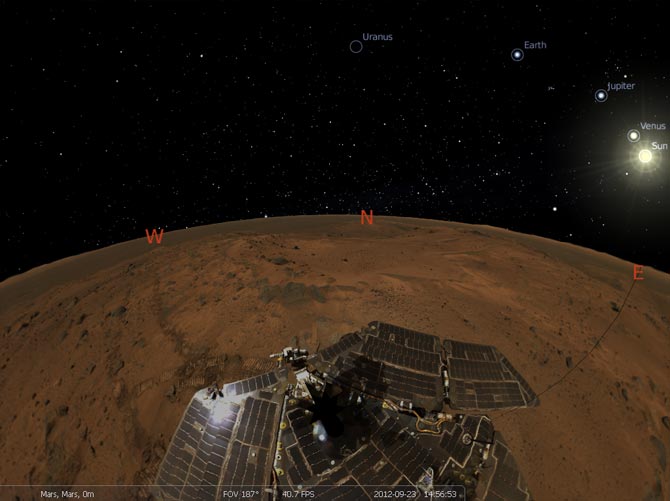NASA Science explains and shares images from recent solar activity.
http://www.youtube.com/watch?v=8VVYb-snvJ8
Forecasters say Solar Max is due in the year 2013. When it arrives, the peak of 11-year sunspot cycle will bring more solar flares, more coronal mass ejections, more geomagnetic storms and more auroras than we have experienced in quite some time.
Keep watching those skies.
Thanks to NASA.
Saturday 21 July 2012
Sunday 15 July 2012
Wednesday 11 July 2012
Stellarium
Features of the software include:
- default catalogue of over 600,000 stars
- extra catalogues with more than 210 million stars
- asterisms and illustrations of the constellations
- constellations for twelve different cultures
- images of nebulae (full Messier catalogue)
- realistic Milky Way
- very realistic atmosphere, sunrise and sunset
- the planets and their satellites
 |
| The view of Earth from the Mars rover |
Tuesday 3 July 2012
Zoom in to the Milky Way’s centre
Zoom in to the Milky Way’s centre until you see a close-up view of objects orbiting the supermassive black hole at the heart of our galaxy.
This zoom sequence stars with a view of our home galaxy, the Milky Way, then zooms in towards the crowded center of the galaxy, in the direction of the constellation of Sagittarius the Archer. Then the scene shifts to an infrared view, which lets us see see through the dusty clouds in this direction and get a close-up view of objects orbiting the supermassive black hole at the heart of the Milky Way galaxy. The final views show the motion of a newly discovered gas cloud that is falling rapidly towards the central black hole.
Subscribe to:
Posts (Atom)

